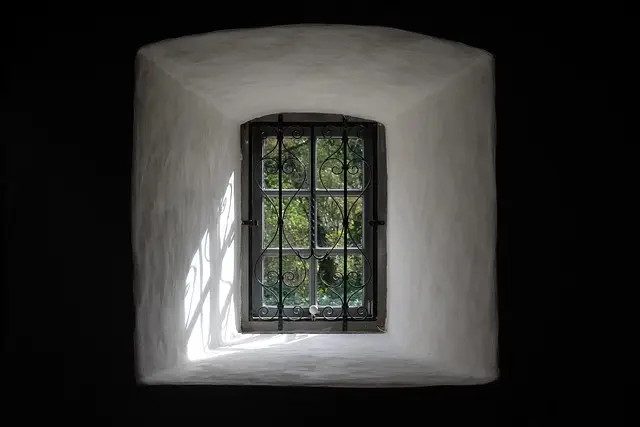Exploring kratom and tea blending for natural relaxation involves carefully selecting and combining the unique properties of kratom leaves, specifically mitragynine and 7-hydroxymitragynine, with the calming effects of various herbal teas like chamomile, lavender, or peppermint. This synergy can enhance tranquility while potentially reducing any adverse effects. The blend's effectiveness is heightened when the right kratom strain, such as Maeng Da, is paired with a soothing tea, offering a holistic approach to relaxation. Beginners should start with a low dosage due to individual sensitivity differences and explore different ratios and additional herbs to find their personalized blend. Safety is paramount, especially for those who are pregnant, nursing, or taking other medications; always consult healthcare providers and use lab-tested, high-quality kratom from reputable sources while following local regulations. Kratom and tea blending for relaxation is an art that requires attention to preparation and ingredient selection to harness potential therapeutic benefits.
Exploring the intersection of herbal remedies and relaxation practices, this article delves into the artful combination of kratom with various tea blends. The synergy between these potent elements can yield a personalized blend tailored for tranquility. We will guide you through the process of crafting your own herbal concoction, offering tips and techniques that enhance calmness while emphasizing safety considerations. Join us as we unravel the nuances of kratom and tea blending for relaxation.
- Exploring the Synergy of Kratom and Tea Blends for Relaxation
- Crafting Your Personalized Herbal Blend: Integrating Kratom with Tea for Enhanced Calmness
- The Art of Blending Kratom with Tea: Tips, Techniques, and Safety Considerations
Exploring the Synergy of Kratom and Tea Blends for Relaxation

Herbal enthusiasts often seek natural ways to enhance relaxation, and the synergy of kratom and tea blends presents a compelling option for those looking to unwind. Kratom, derived from the leaves of Mitragyna speciosa, has been traditionally used in Southeast Asia for its stimulating and relaxing properties. When combined with the diverse profiles of tea blends, these effects can be modulated to achieve a desired level of tranquility. The alkaloids present in kratom, such as 7-hydroxymitragynine and mitragynine, interact synergistically with those found in teas like chamomile, lavender, or peppermint. This interaction can amplify the calming effects while potentially reducing any undesirable side effects. Tea blending allows for a personalized experience, as individuals can tailor their blend to their specific needs, enhancing the relaxing properties of kratom with additional herbs known for their soothing qualities. The result is a holistic approach to relaxation, where the combined effects of these natural substances work in harmony to create a peaceful state of mind. When exploring kratom and tea blending for relaxation, it’s crucial to consider the specific strains and types of teas used, as well as the appropriate dosages to ensure a safe and enjoyable experience. Careful experimentation with different ratios and ingredients can lead to the perfect blend for personalized relaxation.
Crafting Your Personalized Herbal Blend: Integrating Kratom with Tea for Enhanced Calmness

Crafting a personalized herbal blend for relaxation can be an art, combining traditional remedies with modern practices to achieve optimal tranquility. Kratom, known for its relaxant and mood-enhancing properties, pairs particularly well with tea, offering a synergistic effect that heightens the calming experience. When integrating kratom into a tea blend, it’s important to consider the type of kratom strain—each with varying alkaloid profiles that can influence the overall sensation. For instance, a balanced Maeng Da kratom can complement a soothing chamomile tea, promoting a sense of peace and well-being. The tea serves as a gentle carrier, smoothing out the effects of kratom, which might otherwise be too potent on its own. This blend is ideal for those seeking to unwind after a long day or to find repose amidst life’s chaos. When experimenting with kratom and tea blending, it’s crucial to start with a low dosage to gauge the effects, as individual sensitivities can vary significantly. Additionally, the choice of herbs to accompany kratom, such as lavender or lemon balm, can further enhance the blend’s relaxing properties, making it a personalized and effective solution for achieving a state of calmness.
The Art of Blending Kratom with Tea: Tips, Techniques, and Safety Considerations

When exploring the art of blending Kratom with tea, it’s crucial to approach the process with both precision and care. Kratom, a plant from Southeast Asia known for its stimulating and relaxing effects, can be seamlessly integrated with various teas to enhance its properties. The choice of tea plays a significant role; for instance, Chamomile or Peppermint teas can amplify the calming effect of Kratom, making it ideal for unwinding after a long day. To achieve an effective blend, start by measuring out the right amount of Kratom powder—typically one to two grams—depending on your tolerance and desired intensity. Then, steep your chosen tea to the desired strength. Once the tea has reached its optimal brewing point, gently mix in the Kratom powder until it’s thoroughly incorporated. The temperature of the tea should be warm enough to dissolve the Kratom effectively but not so hot as to degrade its alkaloids. Safety considerations are paramount; never consume Kratom if you are pregnant, nursing, or taking prescription medications without consulting a healthcare provider. Additionally, be mindful of your dosage and always source high-quality, lab-tested Kratom from reputable vendors to ensure purity and safety. With the right technique and attention to detail, blending Kratom with tea can create a harmonious synergy that offers a unique and potentially therapeutic experience for relaxation. Always prioritize personal health and adhere to local laws regarding Kratom consumption.
Herbal blends, particularly those incorporating kratom and tea, offer a natural avenue for achieving relaxation. This article has delved into the harmonious combination of these elements, guiding readers through the synergy of kratom and tea blends, offering personalization tips for crafting their own tranquil concoctions, and providing insights into the art of safe and effective blending. Whether you’re a seasoned enthusiast or new to the realm of herbal relaxation, the knowledge presented here underscores the potential benefits of kratom and tea blending for those seeking a serene moment. With careful selection and preparation, these natural remedies can be a meaningful addition to your wellness routine.






